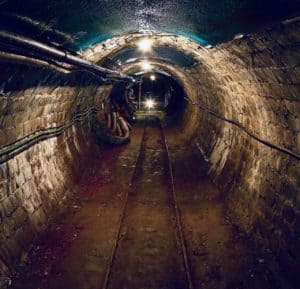 The team at BitOoda, a global digital asset financial technology & services platform providing next-gen risk management solutions, best-execution brokerage & expert market analysis, has released their Weekly Hash Report, dated July, 19 2021.
The team at BitOoda, a global digital asset financial technology & services platform providing next-gen risk management solutions, best-execution brokerage & expert market analysis, has released their Weekly Hash Report, dated July, 19 2021.
As noted in the report from BitOoda, hashrate or the amount of computing power securing the Bitcoin (BTC) network is “bottoming near ~98EH/s.”
As mentioned in the update from BitOoda, hashrate seems to be bottoming after China’s mining ban, with observed Hashrate estimated to be at 100 EH/s, which is just a bit higher than the current “target hashrate of ~98EH/s.”
This past Saturday’s reset brought BTC mining difficulty “down 4.8%,” the report revealed while noting that BitOoda had recently lowered their year-end target hashrate estimate to ~145EH/s, with “an upward bias if electrical infrastructure bottlenecks prove more transient than our model currently indicates.”
The Bitcoin price dropped 7.4% week-on-week to $31,708 as of July 18, 2021 midnight UTC and the flagship cryptocurrency is trading at just below $30,000 at the time of writing. BitOoda’s report also noted that BTC price is “near a one-month low (when they published their report), despite recently-improved miner economics on increased BTC / PH/s flow following the weekend reset.”
The report pointed out that they “assess equipment prices should fall significantly over the next few months, given the shortage of sites into which to plug future deliveries; this should also accelerate an upgrade cycle of still-profitable S9 or S17 equipment to latest-generation rigs.”
The report further revealed:
“Total BTC earnings per PH/s are ~9.32 mBTC, up from ~8.96 mBTC / PH/s last week following the reset. (1mBTC or milliBTC = 1/1000 BTC.) Improved BTC earnings have not fully offset price declines. Transaction fees fell 92 bps WoW to 1.3% of miner rewards, or 0.12 BTC per block, with very low congestion levels in the ‘Mempool’.”
The report added that Bitcoin mining revenue declined to $296 / PH/s per day and $440/MWh as price dropped and the reset offset “decreases in transaction fees.” The BTC network has, for the most part, “normalized from the recent China ban, and [BitOoda] expects Hashrate to begin rising again,” the report noted.
It also mentioned that the BitOoda North American Hash Spread™ fell 4.1% from $418 to $401. The company defines the BitOoda Hash Spread™ as “the difference between the cost of power per MWh and the Bitcoin mining revenue per MWh.”
This gives miners “a quick sense of the surplus generated by their business to cover personnel, overhead, depreciation, and profit,” the company explained. They also noted that the weighted average “around the clock U.S. wholesale industrial power price (5 markets) of $38.90 / MWh leads to an aggregate spread of $401.”
The report further noted that the older-gen S9-class devices “saw their Hash Spread™ down ~5.3% to $85/MWh. S17-class devices, the bulk of the installed base, saw a hash spread of about $283/ MWh.”
BitOoda added:
“We estimate that the Bitcoin mining network currently consumes about 4GW of power. Excess rigs over available power should accelerate the retirement of older-gen equipment in the coming months.”
They also mentioned:
“The 72 MWh required to mine 1 BTC with S19-class rigs translates into $2,805 in power expense. It costs $9,975 using S9 rigs, a 65%+ margin, excluding labor.”
The main takeaways from the report are:
- Mining economics have “improved in BTC terms but weakened in USD terms following Saturday’s reset”
- Hashrate may be “bottoming and likely will begin to tick back up from here”
- Miners “continue to face infrastructure bottlenecks, which should lead to 2+ years of better mining economics relative to our prior estimates”
- “We assess this presents an opportunity for US-based miners to gain share and acquire rigs and new hosting customers at attractive terms”

